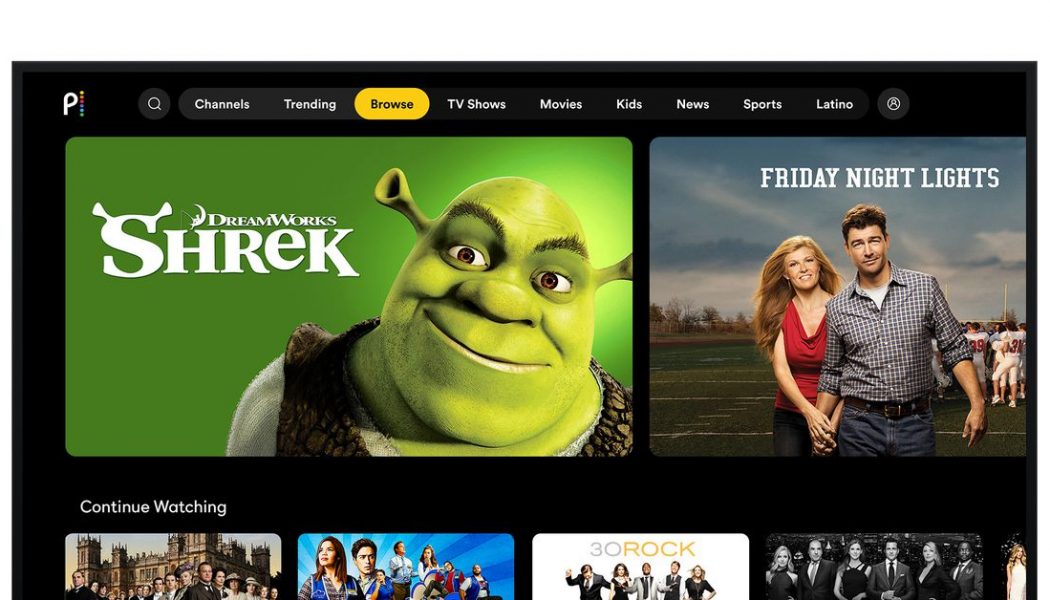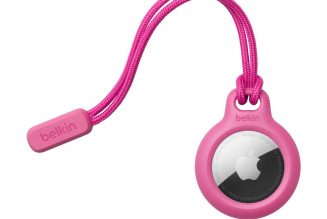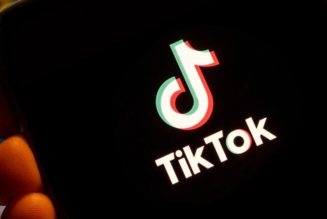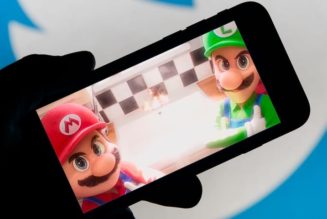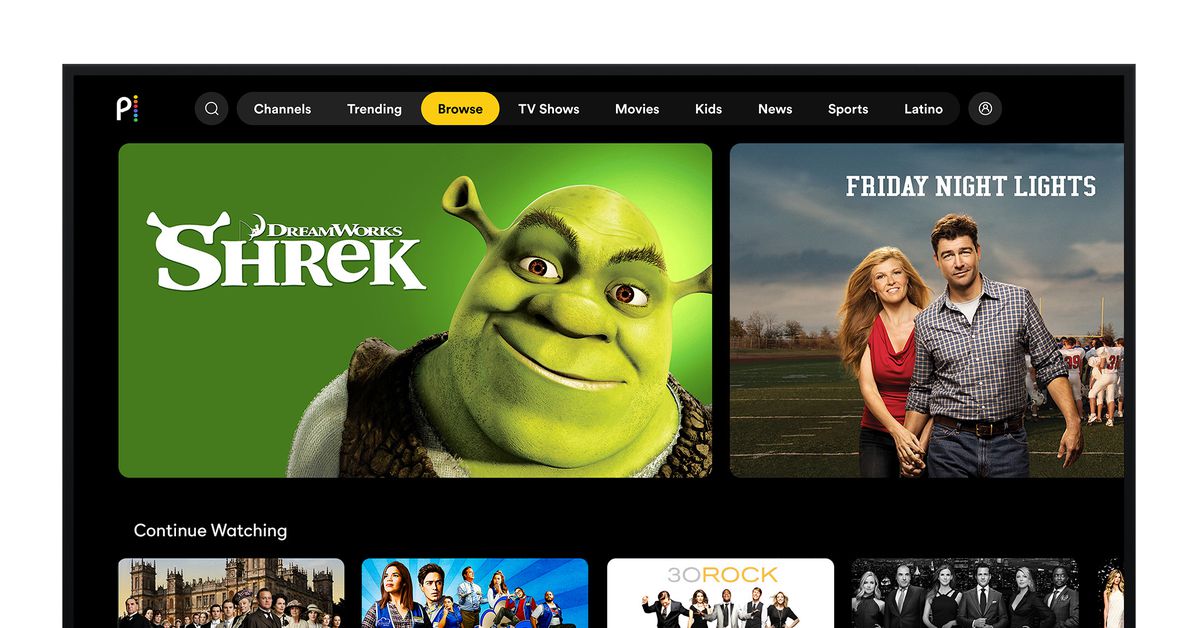
Peacock is NBCUniversal’s new streaming service and the last major entrant in the colloquial streaming wars. But Gidon Katz, the company’s president of direct to consumer, believes Peacock can win by leaning into something most of its biggest competitors won’t: offering premium entertainment, mostly for free.
When Peacock launches tomorrow across the United States, people can choose between three different tiers: a completely free ad-supported version that gives people access to more than 13,000 hours of content, daily news and sports programming, and samplings of Peacock original series, but not full access. Then there’s Peacock Premium, a $4.99-a-month version that gives people more than 20,000 hours of content, including all Peacock Originals and exclusive live programming but will still feature some ads. Lastly, there’s a $9.99-a-month version that offers the same thing without any ads. (The $4.99 tier will be free for Comcast and Cox subscribers.)
It’s a break from traditional streaming services, which usually break down into two main categories: SVOD (subscription video-on-demand) and AVOD (advertising-based video-on-demand). Peacock is taking a unique approach in straddling the line between both, but the company’s focus is on giving Peacock away as free to as many people as possible, according to Katz.
That’s free with a giant asterisk attached, as the entry-level tier comes with considerably less content — including access to some of the live benefits that NBCUniversal is promoting as a key differentiator for its service (like live Premier League soccer games). For full access to those live services — to really enjoy Peacock for what it’s designed to do — it’ll cost me $10 a month (as I’m more inclined to go ad-free).
(Disclosure: Comcast, which owns NBCUniversal, is also an investor in Vox Media, The Verge’s parent company.)
Plus, even the paid tiers have their limitations. There’s no access to NBC’s regular linear channel, just Peacock’s curated live feeds — a major difference from other services like CBS All Access, which does offer its traditional channel for $5.99 a month. And while NBCUniversal sees Peacock as a basic cable replacement of sorts, it’ll still only offer NBCUniversal content, meaning it can’t compete with more fleshed-out (but expensive) TV replacement services like Sling TV, YouTube TV, or FuboTV. That leaves Peacock as more of an NBC-exclusive version of basic cable with a lot of limitations, rather than a true basic cable replacement.
NBCUniversal is arguing that Peacock is the best version of that idea, expanding what live games, shows, and news programming options are available to Peacock — and Comcast — customers beyond a straight copy of NBC’s channel, offering things like Premier League games and access to a new 24-hour Today Show streaming portal for live news.
But even with the more limited live viewing, Katz hopes that having access to news and some sports will create a more intriguing streaming experience for people used to Netflix, Disney Plus, and other SVODs. The hope from NBCUniversal is that people really want to incorporate aspects of live TV viewing into their streaming services, and that will separate Peacock from competitors.
“Putting them into one application, we believe that we can serve a wider range of customer needs,” Katz said. “What we’ve designed is something that taps into the more fundamental underlying reasons that people watch TV. That’s hugely differentiated because nobody else in the streaming world is doing that.”
Even Peacock’s design (made to resemble a live TV service) focuses on spotlighting live TV programming, including exclusive Premier League soccer games, a channel dedicated to Saturday Night Live, up-to-the-minute news programming. Peacock reads as a defensive strategy to try to reinforce the benefits of cable to customers who prefer new streaming options. Being able to offer a completely free ad-supported version (and a “free” premium tier for people who stick with their Comcast or Cox plans) is “absolutely fundamental,” according to Katz.
If typical streaming services head into the market with the idea of disrupting how people watch TV, Peacock almost acts as a reminder of why consumers like cable TV in the first place. After having Peacock on the market in a limited release (it was available beginning in April for Comcast’s Flex and X1 customers), Katz said what they really noticed is people liked just having something playing when they opened Peacock, akin to standard cable TV.
“It gives people comfort,” Katz said. “It makes people feel that the TV’s alive.”
Katz told The Verge ahead of Peacock’s launch that they saw “a massive gap in the market” for premium content on an ad-supported platform. That includes everything from popular shows and movies, like 30 Rock and the Fast and Furious franchise, to live programming, as well as sports and news.
Eventually, the goal for NBCUniversal is to give the $4.99 Peacock Premium tier away for free to everyone via distribution agreements with every major pay-TV provider like Comcast and Cox, and other platforms like Roku and Amazon, which Peacock currently isn’t announced on. Peacock chairman Matt Strauss told Variety the endgame is having “the majority of market to be able to get Peacock free.”
“The idea of launching a free service at this point, in this kind of economically challenged environment, for us is absolutely fundamental,” Katz said. “It removes all those barriers for those consumers who are concerned about, while looking at it on paper, all those other subscription fees.”
Depending on who you ask, Peacock is arriving at either the best or worst time. A number of NBCUniversal’s planned originals won’t launch with Peacock as originally intended because of production issues brought on by the pandemic. (Its competitors, like HBO Max, are in the same boat.)
But what Peacock lacks in new original content, a game currently being dominated by Netflix — the streamer has released more than 50 movies within the first six months of the year — it makes up for in cost: it’s free. Its extensive library of beloved IP and live news is coming at a time when almost everyone is stuck inside and glued to the news cycle, which could help boost its profile.
On paper, Peacock is both a smart move for Comcast and a good deal for average consumers. Peacock is offering a reimagined basic cable package, Katz suggested; even at the most expensive end, $10 a month is still less than Netflix, HBO Max, Amazon Prime Video, or Hulu without ads. Plus, it’s offering a catalog of IP that most streaming services can’t compete with. (Note: because of an existing relationship, some of the titles that appear on Peacock are also streaming on Hulu.) Peacock also allows Comcast to collect more customer data and sell higher-priced, hyper-targeted ads. NBCUniversal developed an entirely new advertising technology for Peacock, and the company’s executives haven’t shied away from the importance of Peacock working as an ad-supported and ad-focused product.
That’s where having two likely popular tiers supported by ads separates Peacock from earlier iterations of the same idea. Peacock isn’t the first streamer to try to offer half a catalog as part of a free tier and a much more expanded, complete selection as part of a more expensive offering. Hulu tried to do it more than a decade ago but wound up getting rid of its free basic tier because the company figured out it wasn’t getting much value from giving away a ton of content on an ad-supported tier. Hulu eventually became an entirely subscription-based video-on-demand service, transitioning its former free tier into a $5.99 subscription, but Comcast wants to use its two basic tiers as advertising platforms.
Now, on the eve of launch, there are a million thoughts going through Katz’s head about what happens after Peacock’s initial launch. The thing that keeps him up at night isn’t getting people to sign up, but figuring out how to keep them. Audience retention. Churn. These are terms that come up in the industry frequently and something that nearly every streamer struggles with over time. For Katz, the answer isn’t trying to out-program a competitor like Netflix, but to figure out how to make TV feel more like TV again, even if it’s a world that’s drastically changing.
“Eventually, the opportunity to keep on giving people bingeable dramas is going to expire,” Katz said. “And we’re going to have to make sure that we, as an industry, work out how we satisfy a wider range of the use cases for TV.”
